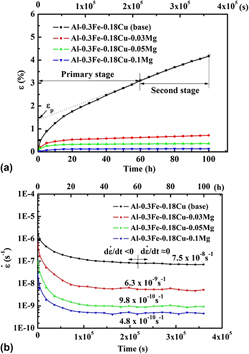Crossref Citations
This article has been cited by the following publications. This list is generated based on data provided by
Crossref.
Tedde, Giovanni Matteo
Di Schino, Andrea
Donnini, Riccardo
Montanari, Roberto
Richetta, Maria
Santo, Loredana
Testani, Claudio
and
Varone, Alessandra
2018.
An Innovative Industrial Process for Forging 7050 Al Alloy.
Materials Science Forum,
Vol. 941,
Issue. ,
p.
1047.
Chen, Hua
Yang, Rong Kai
Wu, Xiao Dong
Yuan, Yuan
Zhang, Bing
Chen, Guan
and
Cao, Ling Fei
2018.
Development of Al-Fe-(Cu) Series Alloys for Aluminum Cables and the Related Annealing Behaviors.
Materials Science Forum,
Vol. 941,
Issue. ,
p.
937.
Angella, Giuliano
Di Schino, Andrea
Donnini, Riccardo
Richetta, Maria
Testani, Claudio
and
Varone, Alessandra
2019.
AA7050 Al Alloy Hot-Forging Process for Improved Fracture Toughness Properties.
Metals,
Vol. 9,
Issue. 1,
p.
64.
Nikzad Khangholi, Siamak
Javidani, Mousa
Maltais, Alexandre
and
Chen, X.-Grant
2020.
Optimization of mechanical properties and electrical conductivity in Al–Mg–Si 6201 alloys with different Mg/Si ratios.
Journal of Materials Research,
Vol. 35,
Issue. 20,
p.
2765.
Si, Jiajun
Rui, Xiaoming
Zhao, Hongyan
Liu, Bin
Liu, Shengchun
and
Liu, Peng
2021.
Time Hardening Model for Large Cross Section Conductor Based on Creep Experiments Analysis Under Different Temperature.
IEEE Transactions on Power Delivery,
Vol. 36,
Issue. 5,
p.
3214.
Wang, Yu
Zhu, Langjie
Niu, Guodong
and
Mao, Jian
2021.
Conductive Al Alloys: The Contradiction between Strength and Electrical Conductivity.
Advanced Engineering Materials,
Vol. 23,
Issue. 5,
Khangholi, Siamak Nikzad
Javidani, Mousa
Maltais, Alexandre
and
Chen, X. Grant
2022.
Review on recent progress in Al–Mg–Si 6xxx conductor alloys.
Journal of Materials Research,
Vol. 37,
Issue. 3,
p.
670.
Khangholi, Siamak Nikzad
Javidani, Mousa
Maltais, Alexandre
and
Chen, X.-Grant
2022.
Effect of Ag and Cu addition on the strength and electrical conductivity of Al-Mg-Si alloys using conventional and modified thermomechanical treatments.
Journal of Alloys and Compounds,
Vol. 914,
Issue. ,
p.
165242.
Li, Xinghui
Cui, Xiaoli
Liu, Houyun
Zhu, Ze
Liu, Jie
Zhang, Xuelian
Cui, Hongwei
Li, Hui
Pan, Yaokun
Feng, Rui
and
Man, Qianming
2023.
Study on the improvement and mechanism of AA6101 electrical conductivity by trace TM (Zr, V, Ti) elements-assisted boron treatment.
Journal of Alloys and Compounds,
Vol. 939,
Issue. ,
p.
168728.
Li, Xinghui
Cui, Xiaoli
Liu, Houyun
Liu, Jie
Cui, Hongwei
Li, Hui
Pan, Yaokun
Feng, Rui
and
Man, Qianming
2023.
Influence of Mg and Si content and heat treatment on electrical conductivity and hardness of AA6101 Al alloy.
Journal of Materials Science,
Vol. 58,
Issue. 20,
p.
8478.
Czerwinski, Frank
2024.
Aluminum alloys for electrical engineering: a review.
Journal of Materials Science,
Vol. 59,
Issue. 32,
p.
14847.
Khoshghadam-Pireyousefan, Mohammad
Javidani, Mousa
Maltais, Alexandre
Lévesque, Julie
and
Chen, X.-Grant
2025.
Strength-conductivity synergy in hypoeutectic Al-Si conductors via ultrafine-grained embedded Si nanoprecipitates.
Materials Science and Engineering: A,
Vol. 929,
Issue. ,
p.
148124.
Li, Jiaxin
Gao, Minqiang
Yang, Li
Shen, Changbin
and
Guan, Renguo
2025.
Effect of cold drawing on the microstructure and property of precipitation strengthening Al–Mg–Si–Cu alloy prepared by continuous casting-extrusion.
Materials Science and Engineering: A,
Vol. 922,
Issue. ,
p.
147669.




